There are dozens of types of kitchen knives. Some are common, and others perform more precise tasks. The paring knife is one of the more common types of knives. It's compact and versatile, but what are you supposed to cut with it? We've consulted the professionals and can tell you what this style of knife is designed to cut.
Paring knives are ideal for making intricate or detailed cuts in various foods or peeling fruits and vegetables. The blade is small, making it better suited for smaller fruits and vegetables with less thick skin. Paring knives are not great for cutting larger vegetables, like pumpkin, or for slicing meat.
Keep reading to discover how to hold and peel with a paring knife and how much you can expect to spend on this product.
![Slices of lemon, piece of salmon in plate on red napkin, kitchen knife on wooden table. What Can You Cut With A Paring Knife [How About Meat]](https://kitchenseer.com/wp-content/uploads/2021/09/Slices-of-lemon-piece-of-salmon-in-plate-on-red-napkin-kitchen-knife-on-wooden-table.-What-Can-You-Cut-With-A-Paring-Knife-How-About-Meat.png)
Paring Knife Uses
The paring knife is a small knife, typically less than 6 inches, that can complete a large variety of tasks in the kitchen. This handy device is generally included in knife sets but is also sold on its own.
Peeling
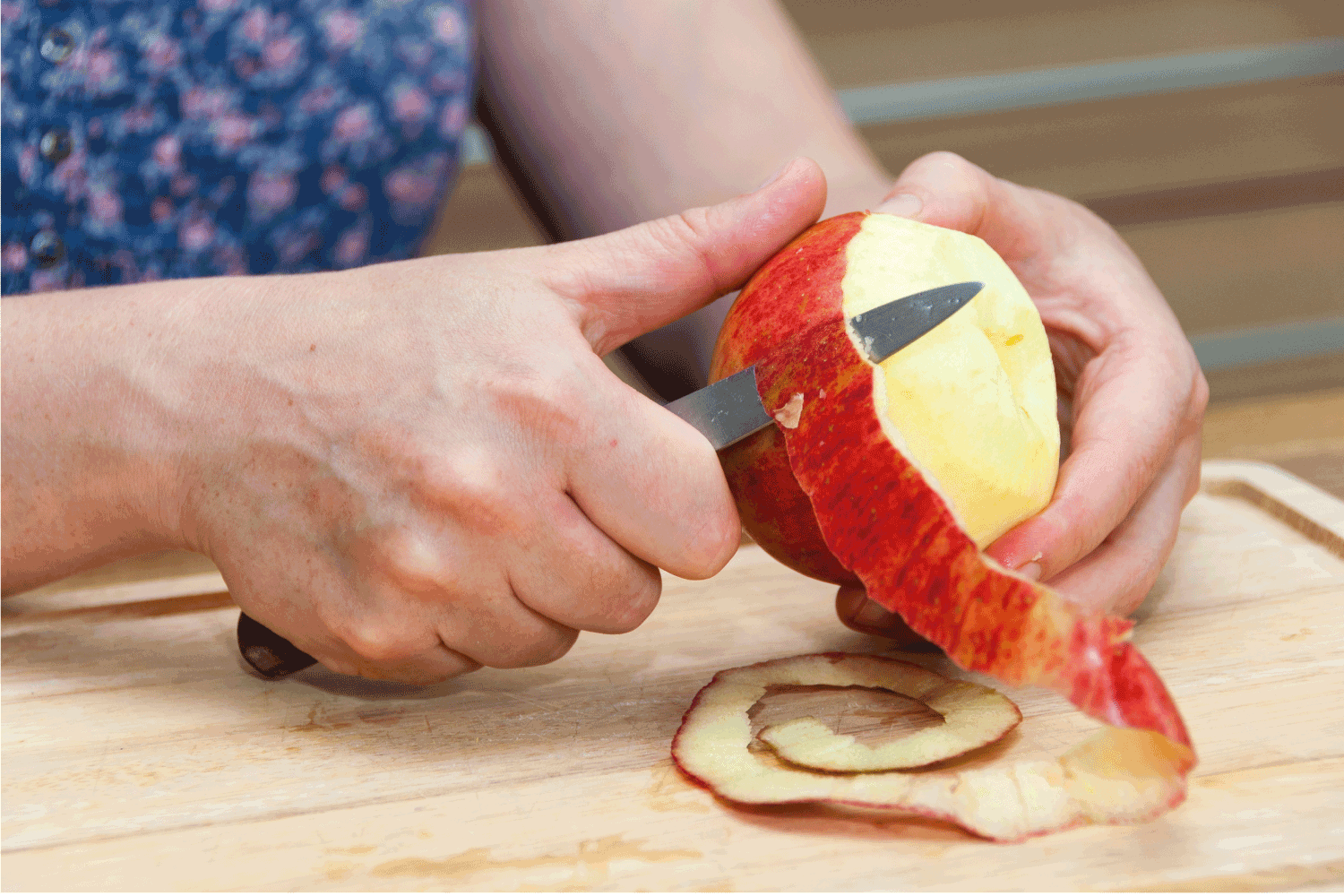
Paring knives are compact blades best suited for paring or peeling the skin off of fruits and vegetables. If you're peeling food with a paring knife, you'll hold both the knife and food in your hands.
You will slowly rotate the food as you slice towards yourself.
Ideal foods for peeling with a paring knife include:
- Apples
- Peaches
- Tomatoes
- Potatoes
- Shallots and onions
- Garlic
Cutting
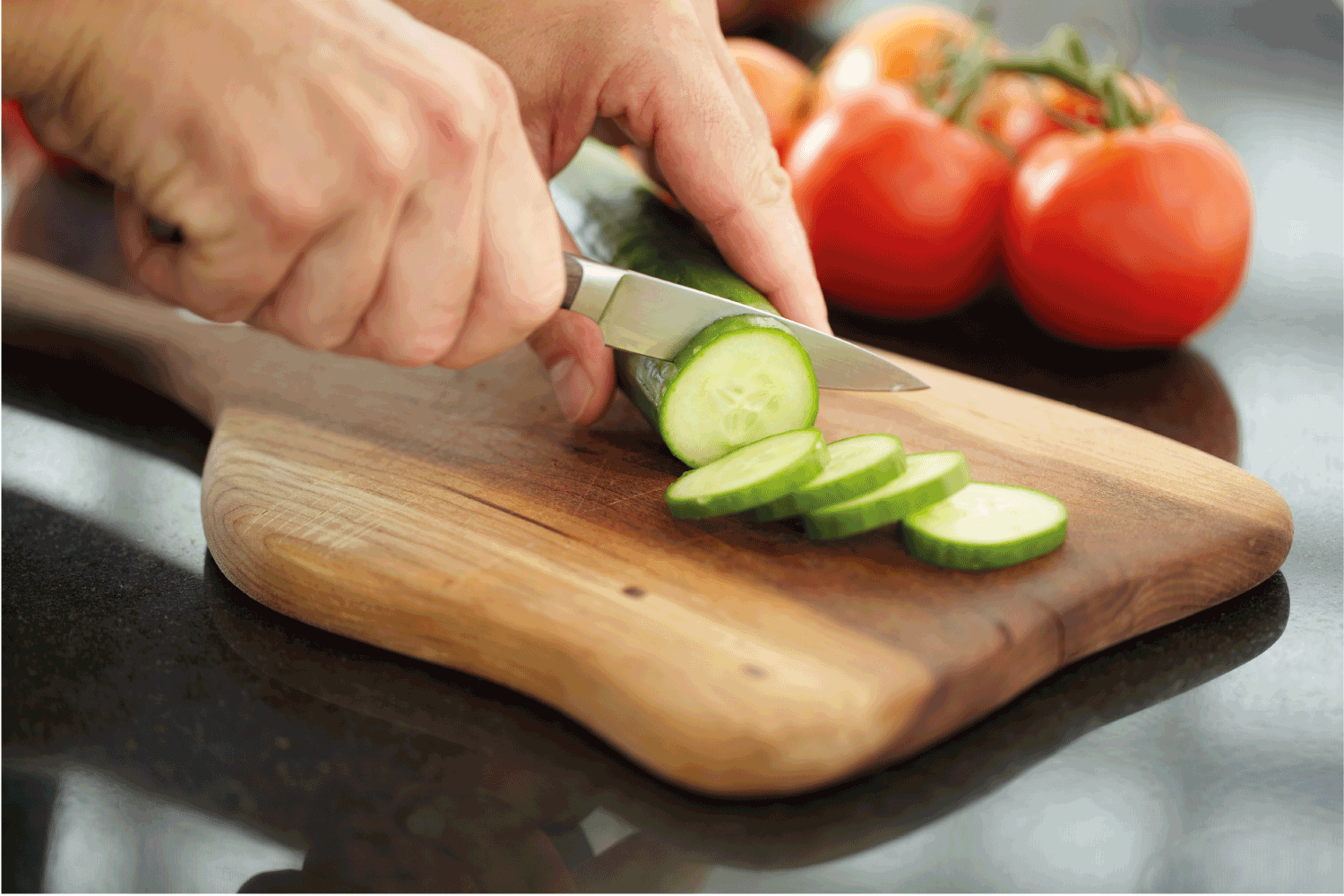
Not only is a paring knife great for peeling, but it can also handle cutting, mincing, or slicing fruits, vegetables, and herbs.
The small size of the blade means that this knife won't be good for cutting through thick, tough, or large pieces of food. This is due to the short and lightweight nature of the blade.
Some good items for a paring knife to cut include:
- Cucumbers
- Carrots
- Strawberries
- Pears
- Citruses (such as lemon and lime)
- Peaches and nectarines
Check out this set of four paring knives on Amazon.
Deseeding
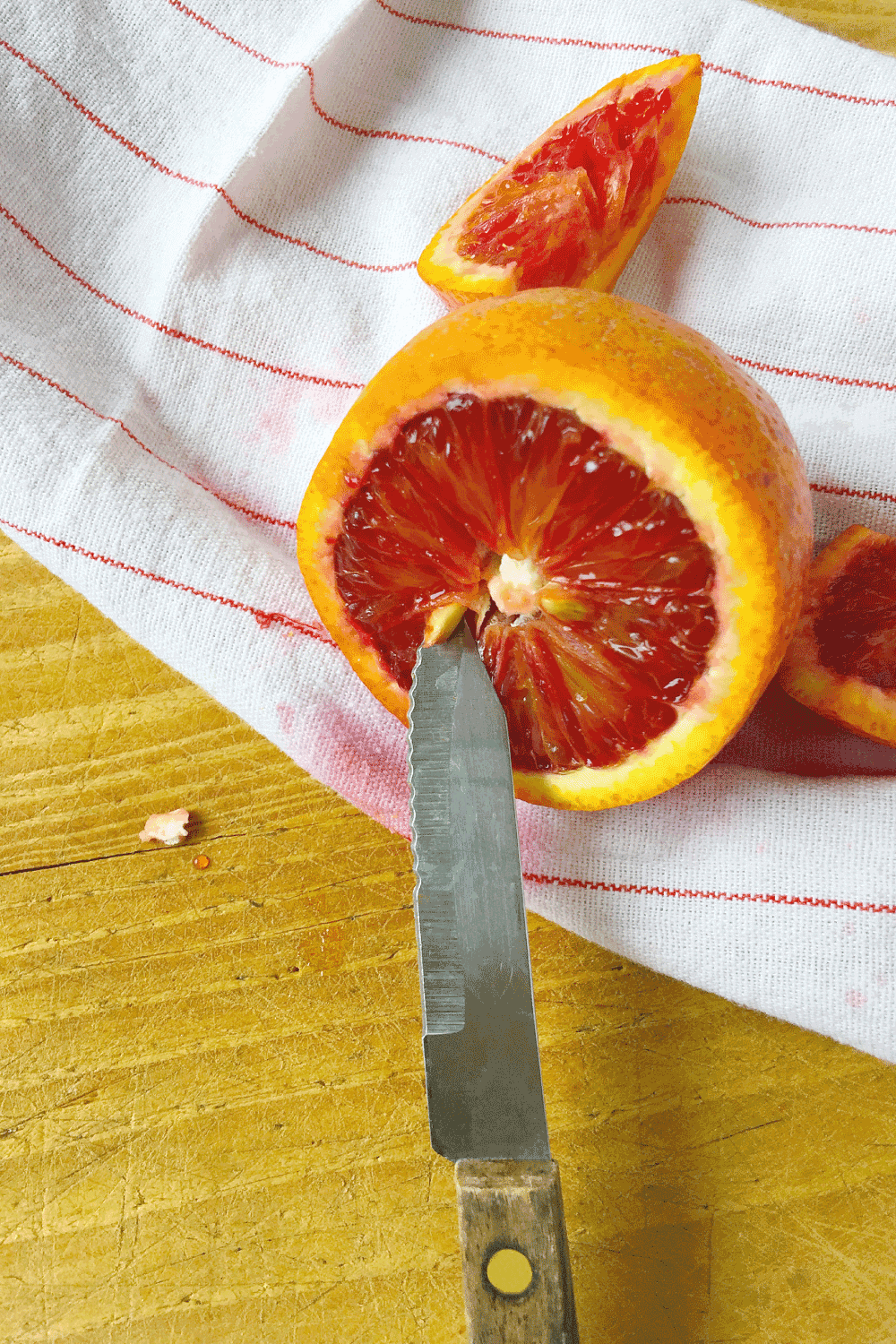
Paring knives are excellent choices for removing the seeds from fruit or vegetables without destroying the surrounding area. To remove a seed, place the tip of the knife under the seed and lift it out.
Do this for as many seeds as you'd like to remove. Oranges and other citrus are common fruits for this knife to remove seeds from.
Check out this TUO 2.75-inch paring knife on Amazon.
Deveining
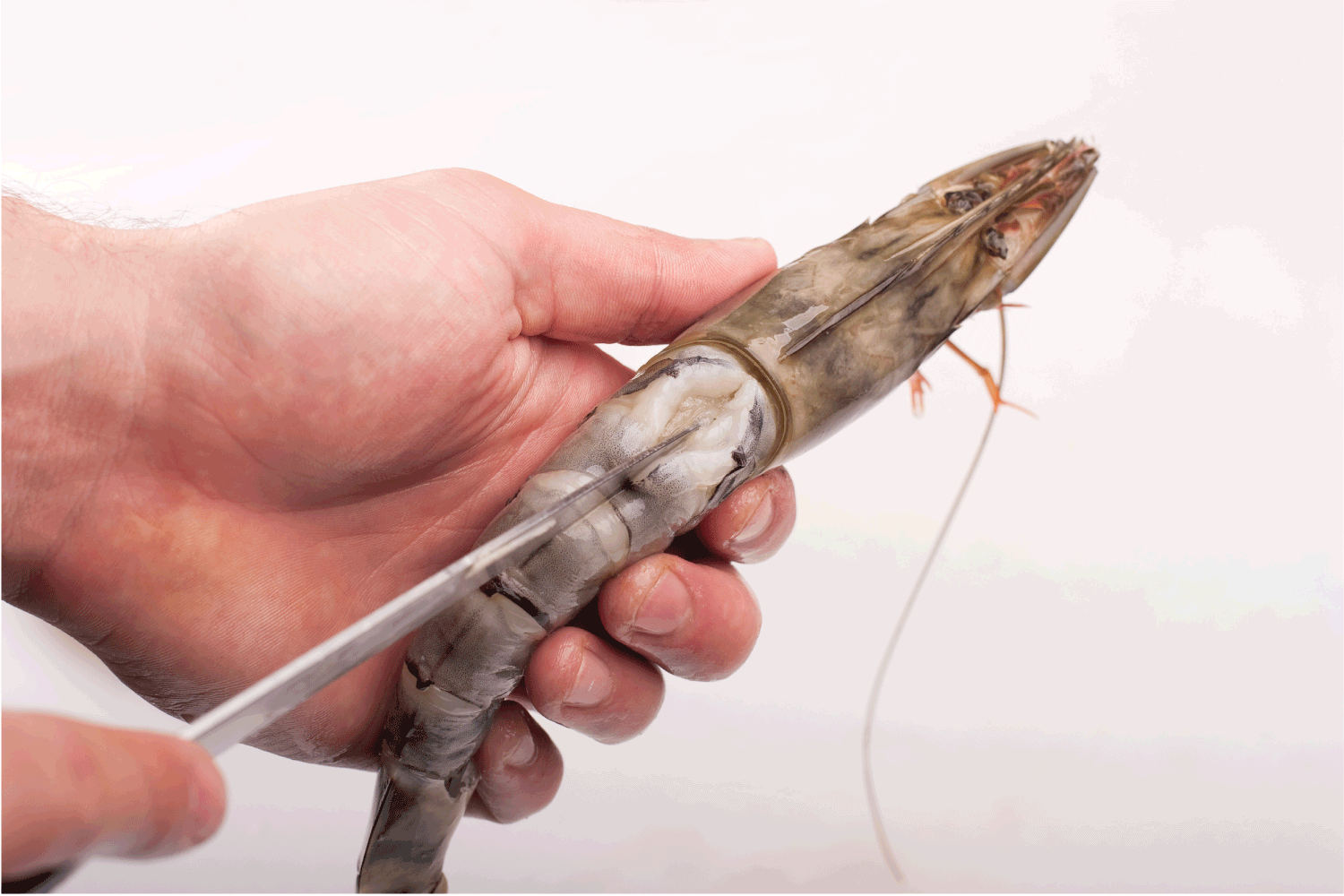
Another excellent task for this knife is removing veins and intestines from shrimp. Be sure to use the backside of the knife when deveining, as the sharp blade can cause the intestines to rupture!
While this method is most commonly used on shrimp, other shellfish, such as lobster and crayfish, can also be deveined with a paring knife.
Check out this Wolf Gourmet 3-inch paring knife on Amazon.
How Not To Use A Paring Knife
This small knife is excellent for a variety of kitchen tasks. Unfortunately, these tools aren't perfect for everything that you need to do. A paring knife would be a poor choice for cutting meat.
Unless you only need to devein shellfish or trim fat from meat, you should consider a different cutter for preparing meat products.
Check out Which Shun Knife Is Best For Cutting Meat? for advice on these kinds of knives.
Paring knives are also a poor choice for cutting large or hardy fruits and vegetables. While the blade is sharp, the knife overall is lightweight.
There isn't enough weight behind it to safely cut hard vegetables like celery or parsnip. If you're unsure if you should use a paring knife, check how tightly you need to hold your knife to cut.
If you have to increase your grip, then you're probably using the wrong blade.
Check out What Is The Best Knife For Chopping Vegetables? for more knife options!
What does a paring knife look like?
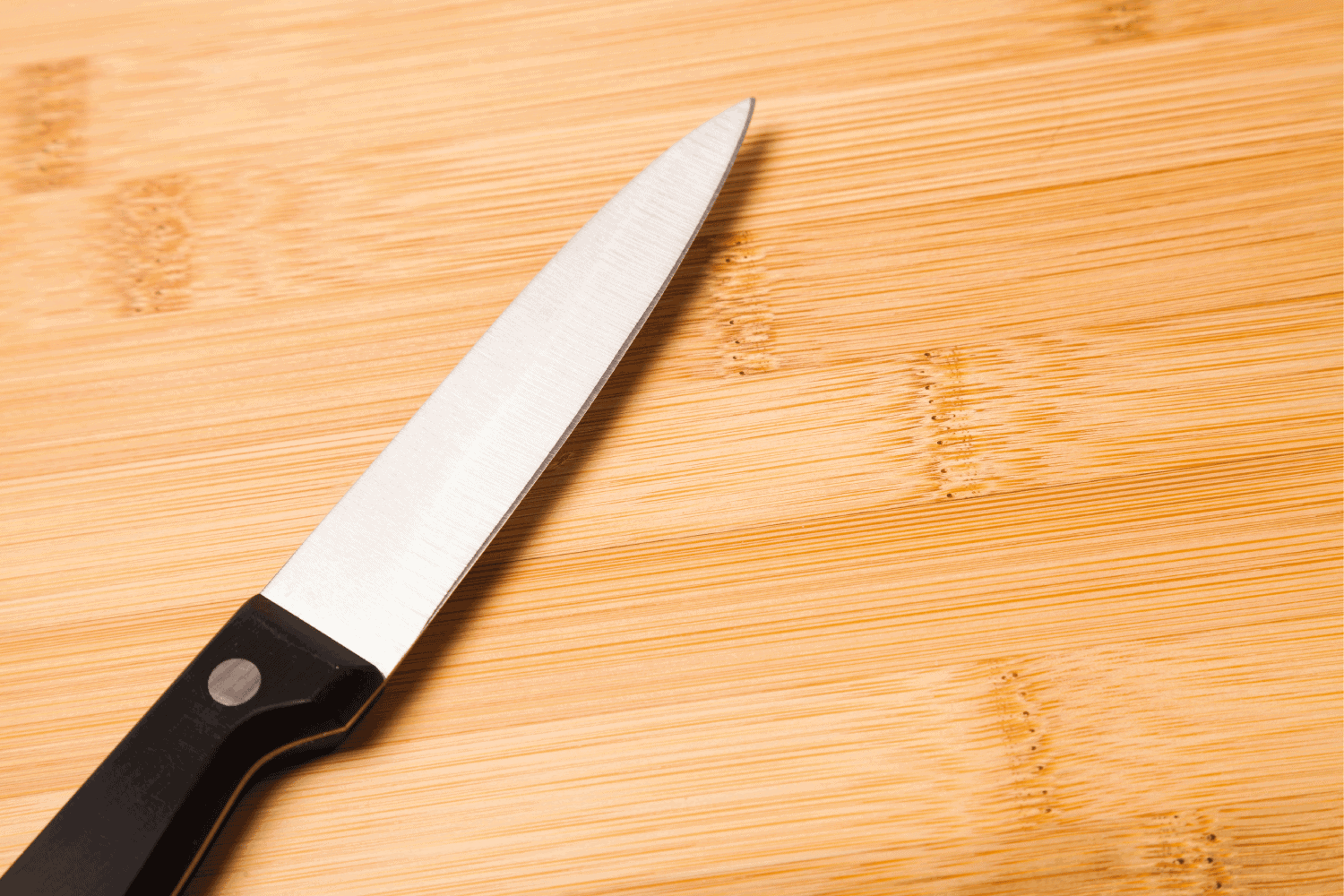
A paring knife is an all-purpose knife with a sharp edge. This type of knife typically has a smooth edge. However, there are also serrated versions.
A serrated paring knife is more gentle on softer ingredients, like tomatoes, and is less likely to squish them.
Regardless of straight-edge or serrated, the blade of a paring knife will measure between 2.5 and 4 inches and have a width of approximately .75 inches.
If you're unsure what size paring knife to get, the 3.5-inch blade tends to be the most versatile size.
This knife also has a few different variations. The spear tip paring knife is the most uses out of all the varieties. The tip of this knife comes into a sharp end, like a spear's.
The bird's beak paring knife has a curved and narrow point. It is ideal for peeling fruit and making more technical cuts.
A sheep's foot blade is entirely straight, and runs flush against the knife's handle. Some people prefer the shape of the sheep's foot blade to the spear tip. It may offer greater control and more accurate cuts.
How do you grip a paring knife?
Holding your knife correctly can make tasks more efficient and help you stay safer in the kitchen.
Since the paring knife is frequently used for peeling, it's one of the only knives where you'll hold the food in your hand while cutting it. This can make finding the proper grip a little more complicated.
To hold a paring knife, wrap your fingers around the handle with your thumb free and sharp edge facing you.
Your pinky, ring, and middle finger will grip the handle. Your index finger will hold the knife where the blade meets the handle. You will use your thumb to hold and maneuver the food you're dealing with.
When using a paring knife, remember to hold the blade with a firm but not tight grip. You will want enough room to move the knife around as you work.
Once you're more comfortable working with this knife, you can even rest your index finger directly on the blade. It is easy to cut yourself, so make sure you have enough experience before attempting this.
Check out this video for a visual representation of holding a paring knife!
How do you peel with a paring knife?
Once you're holding your knife correctly, it's time to begin peeling your fruit or vegetable. Hold the food being pared in your free hand and rest the blade against the food.
Place the thumb holding the knife onto the food to stabilize it as your work. When you're ready, press the fruit into the blade and begin cutting.
With your knife slightly angled, gently push your blade towards your body. Once you break the skin, continue cutting towards yourself.
Use your thumb to push the food towards the edge of the blade gently. Make sure to move your thumb back once the blade gets too close. You'll also use your food-holding hand to spin the food slightly as you work.
Look at this video to see what it looks like to pare an apple!
How much does a good paring knife cost?
While most knife sets do include a paring knife, you can also purchase paring knives on their own. There is a significant difference in price for paring knives. These nifty blades can cost as little as $5 and even as high as $100.
When it comes to this kind of knife, there are a few things you should be looking for.
Paring knives should be sharp and durable. A sharp blade is vital for this knife because of the tasks it needs to complete. A dull blade will make a mess out of the delicate tasks required of it.
With these requirements in mind, a good paring knife should cost anywhere from $15 to $25.
Check out How Much Does A Paring Knife Cost? for more information!
In Closing
Paring knives are an excellent choice for handling smaller foods or making more intricate cuts. While this tool is too small to handle some of the more demanding tasks in the kitchen, its versatility makes it an excellent addition to any kitchen.
For knife care tips, check out: How Often To Sharpen Kitchen Knives?





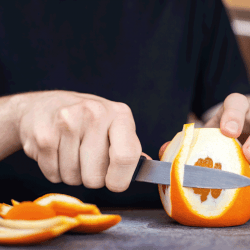
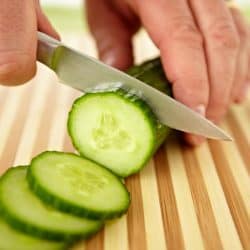


![set of cheese knives on a round wooden board. 14 Types Of Cheese Knives [Inc. What Cheese They're Good For And Why]](https://kitchenseer.com/wp-content/uploads/2021/07/set-of-cheese-knives-on-a-round-wooden-board.-14-Types-Of-Cheese-Knives-Inc.-What-Cheese-Theyre-Good-For-And-Why-250x250.png)